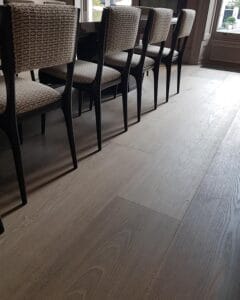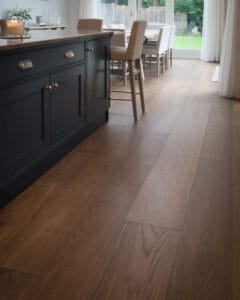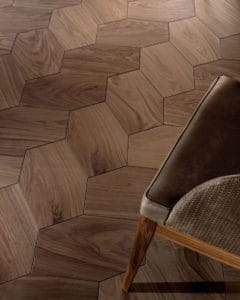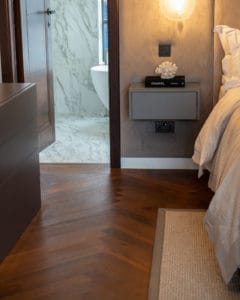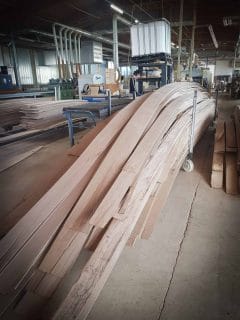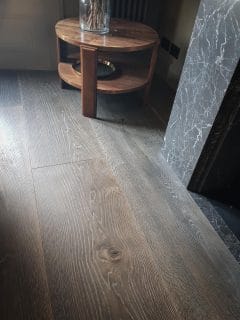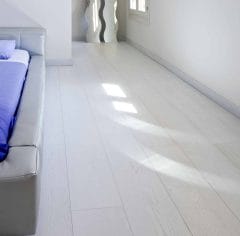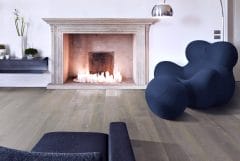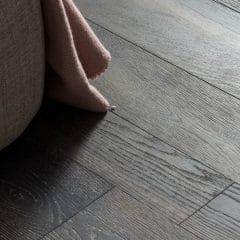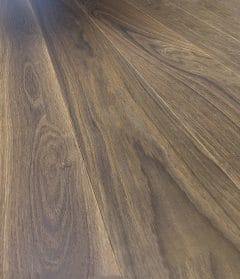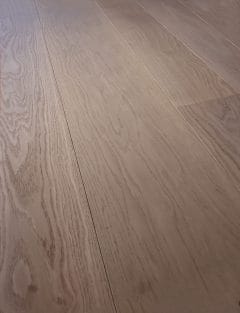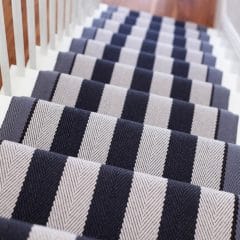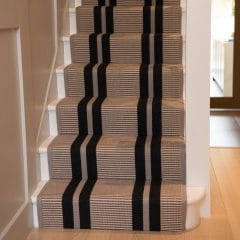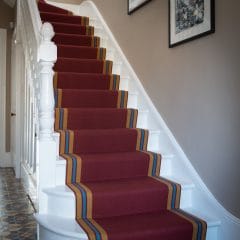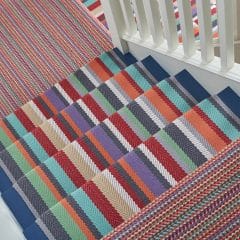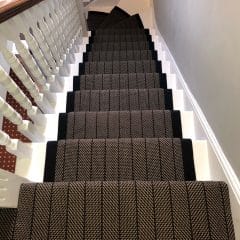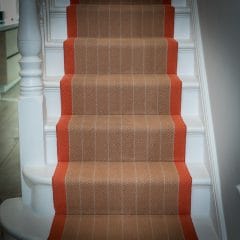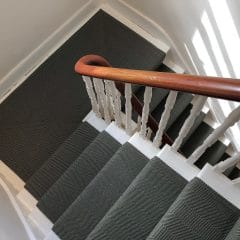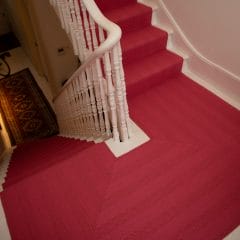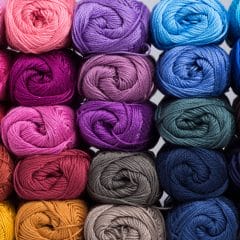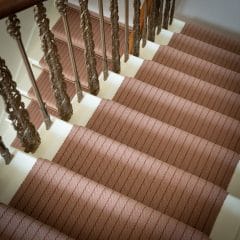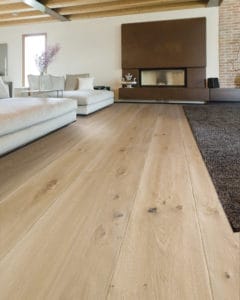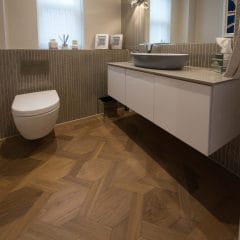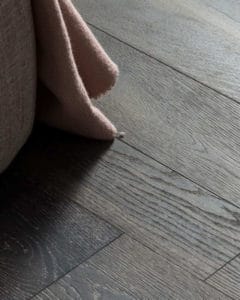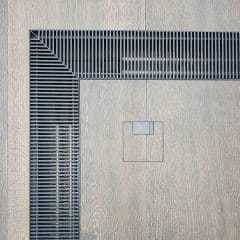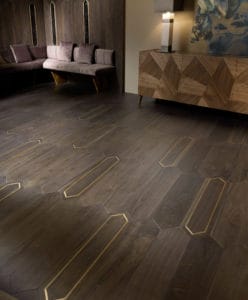Care and Maintenance of Wool Carpets

Information courtesy of Westex Carpets. A good programme of regular cleaning and maintenance extends the life and original appearance of your carpet.
Vacuum cleaning
Care and maintenance of wool carpets is a crucial factor in longevity of your purchase. This guide encompasses many ways to maintain the condition of your wool carpets, one of which is Vacuum cleaning. For loop pile qualities, vacuum cleaners without a beater bar should be used. For cut pile qualities beater bars are recommended. For maximum benefits and effectiveness use a vacuum cleaner with adjustable height and suction settings and rotating brushes that will loosen deep rooted dirt. The suction of all vacuum cleaners should be sufficient so that it can get through to the backing and pick up any dust and dirt settled there. There should be a large closed filter and filter system, so the dust does not re-enter the room. Whatever your choice in model of vacuum cleaner you decide upon, it is important to have it regularly serviced. Keep the suction hose and attachments free from foreign bodies, and ensure that these do not become blocked, as this could reduce the suction. Ensure to examine the suction head for rough, sharp edges or bent metal which could result in damage to your wool carpet.
High traffic areas such as corridors, stairs and entrance halls should be vacuumed daily. The whole carpet should be vacuumed a minimum of twice a week. In this way, dirt lying on the surface will be removed. By doing this on a regular basis, you will be able to avoid any further penetration into the pile. Equally as important is dirt already lying deep in the pile being removed; however, this is not always so easy and can be very expensive. Surface dirt can be removed while the vacuum cleaner is kept in the direction of the pile for a long time and then the opposite way. You can repeat this, as necessary. Always follow the manufacturer’s instructions, specifically the machine bag and filter change and maintenance to ensure maximum possible suction at all times. If you require any further information on the suitability or selection of the appliance, please direct to the appliance retailers direct.
Deep cleaning
Daily vacuuming is the most important step for maintenance of wool carpets; however, deeper extraction cleaning takes care of removing tough, stubborn and deep lying dirt.
We recommend cleaning products that are recognised by WoolSafe®. WoolSafe® is an active worldwide organisation that tests products for the professional cleaning and maintenance of carpets – a suitable and appropriate cleaning substance receiving the WoolSafe® Certificate. By passing all the WoolSafe® test requirements manufacturers can display a certificate and the WoolSafe® logo on their packaging.
We recommend a dry or wet extraction clean every 12-18 months, as a minimum, every two years as a standard and certainly before dirt becomes visible. You should use a recognised professional carpet cleaning company to undertake the work. It’s important to keep in mind that wool requires special care. Excessive rubbing and high temperatures on the wool fibres should absolutely be avoided. Wool suffers if bleach or alkaline products are used. Therefore, bleach or alkaline products should only be treated with neutral cleaning agents with a pH value between
5.0 and 8. When using wet cleaning methods wool must be dried quickly to prevent browning or yellowing.
Do not wait until dirt is visible on the carpet. If the carpet is already heavily and excessively dirty cleaning is all the more difficult and expensive and, as a result, its life is considerably reduced. Never use products intended for another purpose, such as washing-up liquid, soap and household cleaners. Even if the initial result of cleaning appears good, problems can occur rapidly, including quick re-soiling, bleeding of colour and shade of the carpet fibres, as well as the backing.
Tips for decreasing soiling
Stain Protection
Westex carpets are impregnated with a protective substance called Stain Resist to prevent rapid soiling. Although this treatment is already advantageous, it doesn’t offer 100% protection. This is due to the treatment becoming worn over time by mechanical wear and tear from walking on it. Stains and soiling should be removed as soon as they occur.
The appearance of your carpet
Shading
Shading is also described as ‘pile reversal’ and may be wrongly misinterpreted as watermarking. Shading involves certain areas in soft, velvet carpets appearing lighter or darker than the surrounding areas. This is only an optical effect, which is caused by the different directions of the fibres and becomes evident in different light conditions. In traffic areas, or where the floor is uneven, shading may also appear more intense. The occurrence of shading does not indicate a fault in the carpet itself.
Changes to colour
The colour of a carpet can change for various reasons. Most usually changes of colour occur due to ‘tracking’, where the treading down of the fibres refracts the light differently and an optical difference in colour occurs. Also, light soiling and fading of dye due to UV-rays from sunlight can lead to colour changes. A thorough
professional clean will restore the appearance of your carpet and revive the colour, provided that the dye content within the fibres has not decreased.
Soiling caused by draughts
At the edge of the carpet near walls, skirting boards, doorways and ventilation systems, heavy soiling can often appear as dark grey streaks. This streaking is formed by dust particles carried in the air and held by the carpet fibres that act like a filter.
Loss of fibres
When a carpet is newly-laid, some short fibres have a tendency to come off. With wool, these fibres build up considerably, although they weigh very little. These appear, for the most part in the first few weeks and mainly with cut pile carpets. The fibres are visible as fluff on the surface of the carpet. This is a normal phenomenon and shouldn’t be worried about, as it lessens. The best treatment for this is to vacuum your carpet more gently in the first few weeks. It is important to also change the dust bag or empty the dust containment unit more frequently.
Stain treatment
For good maintenance of wool carpets stains should always be treated immediately. The earlier you fight the stain, the easier the removal.
- Absorb liquids immediately with an absorbent cloth such as kitchen paper, toilet paper, cotton towel, etc. and dab, not rub.
- Solid substances (e.g. yogurt or similar) remove with a spoon or the back of a knife.
- Identify the stain, in order to select the correct treatment.
- Always work the stain from the outside inwards.
- Dab stains, NEVER rub.
- Take care when using solvents. Put on a cloth first and not directly onto the carpet.
- Ensure there is sufficient fresh air supply
- Always test the cleaner/stain remover in an inconspicuous area (even better on a carpet sample of offcut), never directly on the stain.
- Always thoroughly dab away the solvent.
- If possible, dry the treated area using a hairdryer.
The recommended stain removal suggestions contain the methods in the order in which the treatments should be attempted.
Easy stains: relatively easy to remove by the recommended methods.
Difficult stains: harder to remove and require repeated attempts using stronger stain removers. With some stains it is probably impossible to fully remove them. In this case, help from professional carpet cleaners is required.
Treatment methods
- Dab stains away using white kitchen towel
- Vacuum
- Cold water
- Warm water
- Diluted WoolSafe®® approved carpet shampoo
- WoolSafe® approved stain remover for water soluble stains
- WoolSafe® approved stain remover for fatty/oily stains
- Absorbent paper or paper tissue and hot iron
- Chewing gum remover (solvent or frozen)
- Nail varnish remover or acetone
- Turpentine substitute
- White spirit
- Rub with a coin
- Gently rub with coarse sandpaper
- Call a WoolSafe® professional carpet cleaner
Easy stains
1st Step | 2nd Step | 3rd Step | |
|---|---|---|---|
Blood | 5 | 6 | 3 |
Burn or scorch mark | 13 | 14 | |
Butter | 7 | 5 | |
Candle wax | 8 | 7 | |
Chewing Gum | 9 | ||
Chocolate / cocoa | 5 | 7 | 6 |
Cola | 3 | 5 | 6 |
Cream | 7 | 5 | |
Eggs | 3 | 5 | |
Floor wax | 7 | 5 | |
Fruit juice | 3 | 5 | |
Gravy / sauce | 5 | 6 | |
Herbal tea | 3 | 6 | |
Metal polish | 5 | ||
Mustard | 5 | 6 | |
Oil / fat | 7 | 5 | |
Emulsion paint | 3 | 5 | |
Shoe polish | 7 | 5 | |
Tea | 3 | 5 | 6 |
Urine (fresh) | 3 | 5 | 15 |
Care and Maintenance of Difficult stains in wool carpets
1st Step | 2nd Step | 3rd Step | |
|---|---|---|---|
Soft Drinks | 3 | 6 | |
Bleach | 3 | 15 | |
Radiator fluid | 5 | 6 | 15 |
Coffee | 6 | ||
Furniture polish | 7 | 5 | |
Felt-tip pen | 7 or 11 | 12 | 5 |
Glue / Adhesive | 10 | 11 | |
Ink | 3 | 6 | 5 |
Ball-point pen | 12 | ||
Lipstick | 7 | ||
Milk | 4 | 5 | 15 |
Nail Varnish | 10 | ||
Oil-based paint | 11 | ||
Rust | 15 | ||
Soot | 6 | 5 | 2 |
Tar (Asphalt) | 7 | ||
Urine (old) | 6 | 15 | |
Vomit | 5 | 6 | 15 |
Red wine | 1 | 6 |
Please note, that the aforementioned cleaning methods are not guaranteed. The methods are recommended and should be tested on a sample or in an inconspicuous place. If you are in any doubt, please contact your local cleaning expert for more advice on the care and maintenance of wool carpets.

